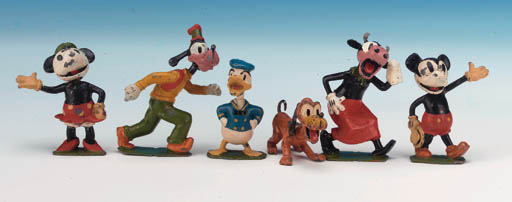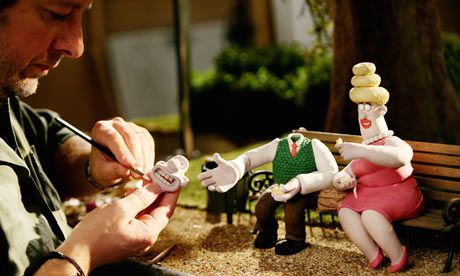Exploring the Basics of Claymation Animation
Claymation animation, also known as stop-motion animation, is a form of art that has been around for centuries. It involves the use of clay figures to create moving images and stories. The history of claymation animation is a fascinating one, full of creative minds and technological advancements that have shaped the way we view animated films today.
Using clay figures, 3D clay models, or other materials, you can create a variety of animations with stop-motion techniques. To get started with claymation animation, you need to understand the basics of the craft and how it works.
Claymation is a process that uses clay to create an animation. The technique you choose depends on your skill level, what you want your finished product to look like, and how much time you have available for work. For instance, a more time-consuming technique might be to use a computer program to create the entire scene and fill it with props, then animate the objects with simple keyframes. A less time-consuming technique would be to create one object at a time and animate it in your own style.

What is the History of Claymation Animation?
With the invention of pottery in the Neolithic period, early humans would use clay to create figures that carried religious meanings or simply represented themselves as part of a story told aloud. These clay figures have survived for thousands of years and provide evidence that prehistoric humans were conscious of their own physical representation in the world around them.
It was not until archaeologists discovered these primitive sculptures that we first discovered how art flourished even before humans cultivated agriculture and domestic animals such as goats and cows.
Claymation is a type of animation that uses rubber, dough, and other modeling materials to create characters and objects. Unlike traditional 2D animation, clay animation is typically drawn in three dimensions, which gives it a unique look.
The technique was first introduced in France in the 1920s when Georges Méliès used it as an extension of his work as a filmmaker. In 1938, animated short films were made for Disney’s Alice Comedies and Mickey Mouse cartoon series with rudimentary stop-motion techniques.

Claymation was introduced to the United States in 1964 by animator Norman McLaren. He used it in his short films, including Corridor of Doors and Fantastic Mr. Fox.
In 1967, Will Vinton invented a clay-animated feature film called A Claymation Easter Special, which led to an American clay screen animation revolution of stop-motion films during the 1970s and 1980s; one of these was Richard Scarry’s Busytown series for the PBS children’s television show “Sesame Street”.
During this era, a veritable industry of independent studios sprung up in the United States, and many of these studios began to produce claymation television commercials and short films.
How Does Claymation Animation Work?
Claymation is an incredibly versatile form of animation that can be used for both educational and entertainment purposes.
Claymation is a style of stop-motion animation that uses clay as the medium to create character models. The animators draw on each individual piece of clay and then attach it to the end of a wire armature that they have constructed in order to hold the clay in place. They then animate each piece individually, drawing and moving them around one at a time, capturing their movements on film before repeating this process hundreds of times.
The Different Types of Clay Used in Claymation Animations
Claymation has been around since the early 1900s and is still used today in films, television shows, and commercials. To create an effective Claymation animation, it is important to choose the right kind of clay for the project. There are several different types of clays that can be used in Claymation animations, including polymer clays, air-dry clays, and oil-based clays. Each type of clay has its own unique properties and benefits that make them well-suited to certain types of projects.
Oil-based clays
These types of clays are made from oils such as bitumen or kerosene. They have a high content of plasticizers and other additives, which can be removed using solvents like alcohol or acetone. All these materials create a smooth surface that is perfect for use in claymation animations when it is desired to have seamless surfaces.
Some oil-based clays are also suitable for use in stop-motion animation projects. Compared to polymer and air-dried clays, oil-based clays dry faster, which makes them an ideal choice for stop-motion animation projects where the scene is being photographed frame by frame. However, these clays also have a high toxicity level and should be handled with care.
Polymer clays
These types of clays are made from natural or synthetic polymers and are good for creating “living” looking textures. They are not as toxic as oil-based clays but they do not dry quickly like air-dried or oil-based clays. Polymer clay is also easy to sculpt, which makes it perfect for stop-motion animation projects where the claymation characters are being created by hand. The polymer clay’s softness gives it a living look that is perfect for stop-motion animation projects that require a soft and organic look.
What Are the Benefits and Challenges of Using Claymation Animations?
Claymation has many advantages, such as the ability to create realistic movements, the ability to animate characters quickly, and its versatility for creating different types of stories.

However, there are also some challenges associated with claymation, such as the time-consuming process of sculpting and painting the models, the cost of materials needed for production, and the difficulty in making sure all elements are correctly animated.
What are the pros and cons of using Claymation?
The benefits of using claymation are as follows:
Claymation can be used to easily create a wide variety of animations, styles, and sizes. Clay is able to move, which allows for more freedom in the creation of moving parts. The characters created from clay are very natural-looking and realistic, making them easier for audiences to watch. Clay is very malleable and can be manipulated into many shapes and sizes depending on the project’s needs.
Claymation is considered to be an inexpensive and easy-to-make animation style. Claymation can be used to create an interesting animated film with a unique style, which is sometimes difficult to find in other types of animation, such as digital and hand drawn.
The challenges associated with using claymation are as follows:
Clay needs time to dry before it can be sculpted or painted, which can take hours or days depending on the size of the model. For example, one clay figurine can take 6 to 8 hours to dry. Claymation requires a lot of work and patience, which may be frustrating for audiences.
How claymation is made
Clay is usually purchased in big bags with the texture of plastic or velvet. The texture creates a special ‘skin’, which can be used to give the figure a different appearance than the usual rough clay. Once the ‘skin’ is selected, pastels and paint are applied to give it a unique color scheme. To start off, small balls of clay are shaped into spheres (called balls), which can be manipulated by hand.

From there, they’re rolled around between their fingers until they become thin enough to create a 3-dimensional form that stands on its own and can then be sculpted with tools such as knives and spatulas. The arms and legs are created separately by rolling out 4- to 5-inch circles of clay onto sheets of foam or plastic. Once their desired shape has been reached, they’re joined with a ball of clay. The arms are then attached to the body, and the fingers are created by pining them on with a metal tool.
Claymation in Video Games & Other Digital Media
Claymation can be used to create unique and interesting visuals, which makes it an attractive option for game developers and digital media creators.
Claymation can be used to create characters, backgrounds, and even entire scenes in video games or other digital media. It allows creators to add a unique level of detail that would otherwise be difficult to achieve with traditional animation techniques.

Additionally, claymation can provide a more tactile experience than traditional animation techniques by allowing players or viewers to interact with the environment in a more physical way.
The most popular clay animations:
Wallace And Gromit: The Curse Of The Were-Rabbit (2005)
Chicken Run (2000)
A Close Shave (1995)
ParaNorman (2012)
Frankenweenie (2012)
Corpse Bride (2005)
The Wrong Trousers (1993)
FANTASTIC MR. Fox (2009)
Conclusion
As technology continues to advance, we are likely to see more and more use cases of claymation in video games and other digital media. This will allow creators to bring their ideas to life with an innovative approach that allows them to express their creativity in new ways.